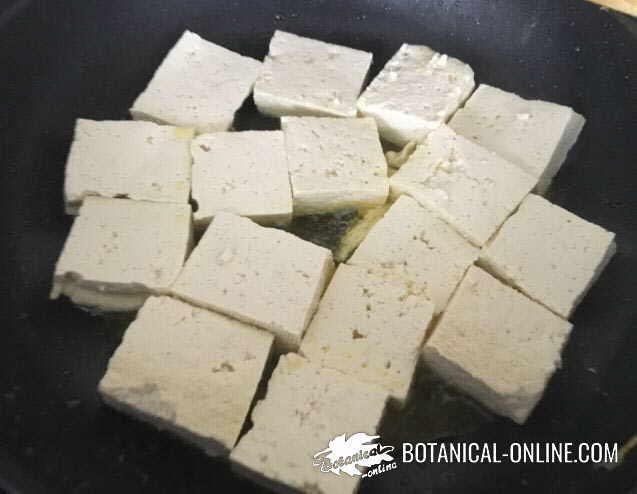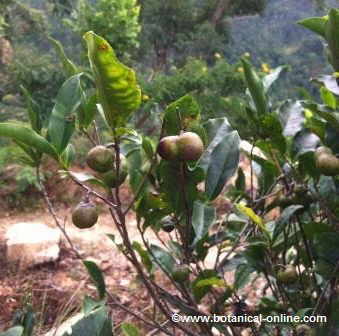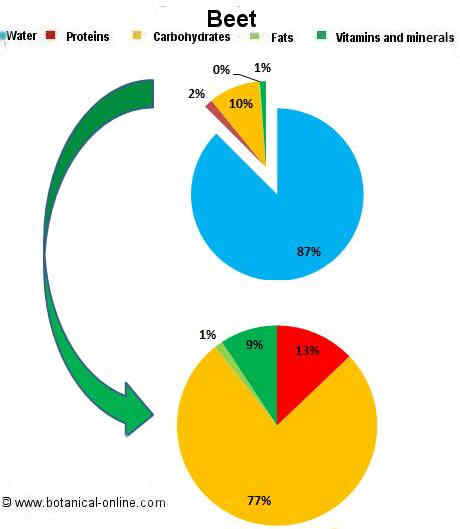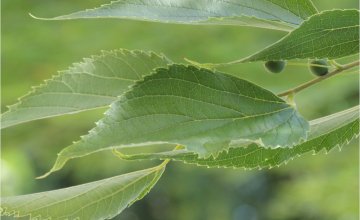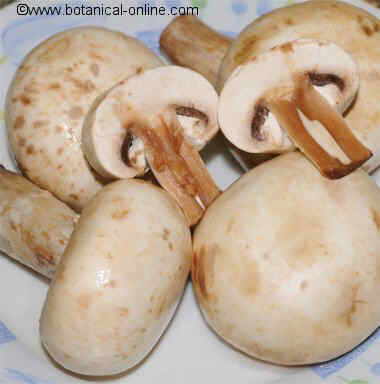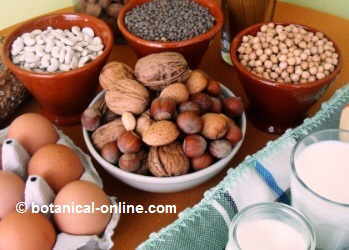Contents
- 1 Fava beans recipes
- 1.1 DRY AND TENDER FAVA BEANS: WAYS TO COOK
- 1.2 Types of fava beans, tender, dry and frozen
- 1.3 Characteristics of tender broad beans
- 1.4 PREPARING AND COOKING TENDER BEANS
- 1.5 Properties of frozen beans
- 1.6 Dry Beans: How to cook
- 1.7 PREPARATION AND COOKING OF DRY BEANS
- 1.8 Recipes with broad beans
- 1.9 Herbs for beans
Fava beans recipes
DRY AND TENDER FAVA BEANS: WAYS TO COOK
Types of fava beans, tender, dry and frozen
For millennia, broad beans have been a staple in the diet of people and animals. They are very nutritious because of its high content of vegetable protein, besides they are crisp and tasty.
If not properly cooked, fava beans are not well tolerated, producing much flatulence and digestive disorders.
In the market you can find different types of beans: Tender, fried, dried, frozen… snack shaped beans mixed with nuts…
Each has a slightly different characteristics and preparation:
Characteristics of tender broad beans
Between April and June you can find tender fava beans, which are the sweetest. The seeds are usually present inside their pods.
The recommended way of eating them is to boil with salt, which then can be added to many recipes. By boiling, small amounts of lecithins, saponins and antinutrients are removed. To remove these substances, a pre-soak for at least 30 minutes is also recommended before you start cooking them.
Broad beans are coated with a thick skin, which is rich in fiber and makes it a little difficult to eat, especially in children. This can be removed.
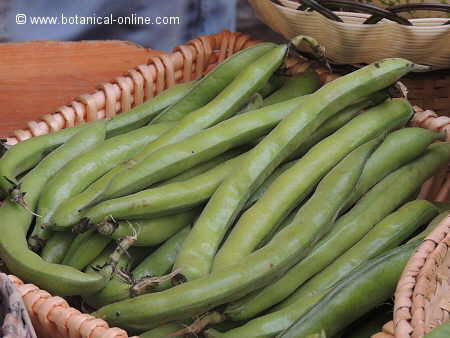
Photo of tender broad beans in their pods
PREPARING AND COOKING TENDER BEANSBeans can be cooked in two ways: whole or peeled (removing the thin skin covering the seeds) which is a somewhat laborious process. Removing the skin is diminishing the fiber content, which helps digestion to be better. They can also be eaten whole. When fava beans are very small and tender, about less than 1 cm. long, it is only necessary threshing them, that is to say, to take away the pod and add to recipes. For most recipes they must be boiled for 10-15 minutes in salted water (starting from cold, put to boil). After being strained, they can be added to purees, fried vegetables, etc. Young fava beans are very tender and, if small, they can be eaten raw, but sometimes this is not well tolerated. |
Broad beans contain virtually the same nutrients as peas, but they have a lower amount of carbohydrates. For this reason, Fava beans are recommended in the diet for people with diabetes, obesity or menopause diets in which fava beans help control levels of blood sugar after eating.
Tender broad beans can also germinate. The seed germination increases the availability and digestibility of its proteins, and also increases the vitamin content. When germinated, they can be eaten raw or boiled.
Properties of frozen beans
Frozen beans are a way to find tender beans out of season. Freezing preserves well enough the nutrients: vitamins and minerals
Frozen beans are consumed as broad beans, boiled 8 minutes and added to the preparations, purees, soups, stews, etc.
Dry Beans: How to cook
Preparation and cooking time of dry beans
Throughout the year you can consume dried fava beans. To preserve them, they must be kept in a sealed glass jar in a cool, dry place, like other legumes. Dried beans are very tasty and retain all the minerals but they require a slightly longer preparation.
If you have to eat dry fava beans, they should be soaked for 48 hours, preferably in a refrigerator, then you cook them long enough to soften their starches and other indigestible components
PREPARATION AND COOKING OF DRY BEANS
|
Soaking beans and cooking in salted water helps eliminate anti-nutrients present in the seeds. Antinutrients are substances such as saponins, protease inhibitors, amylase inhibitors, phytates, etc. These components are responsible for some poor digestion of legumes, especially when they are not soaked or not cooked long enough.
Recipes with broad beans
How to enter broad beans in my diet?
Beans can be consumed in any of the above forms, usually served as a main course, because they are very satisfying.
In these cases, when the beans are “single dish”, they should ideally be combined with grains such as rice, because this is the way to complete proteins. This recommendation is most important in vegetarian diets.
Recipes with beans:
Herbs for beans
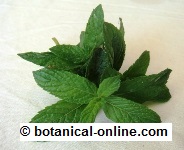
Photo of mint, which is often used in stews with fava beans
Beans are often seasoned with herbs with digestive properties, such as peppermint, that also has a very distinctive flavor.
Other digestive plants that can be added to the stew: anise, caraway, pieces of fresh ginger, turmeric (add 2 minutes before turning off the heat to keep their active ingredients), pepper, etc.
It is recommended NOT to accompany fava beans with too much protein and animal fat (like sausages), too much salt, or too spicy dishes, because the combination of these ingredients can cause slow digestion and stomach pain.
*More information:
– Legumes make us fat or are high in calories?
– Problems with the digestion of legumes
![]() More information on fava beans.
More information on fava beans.

